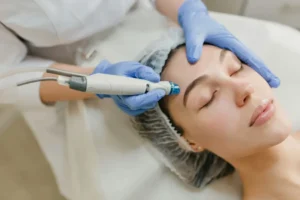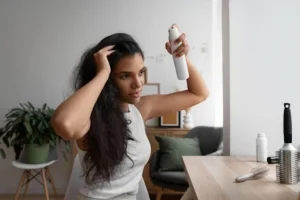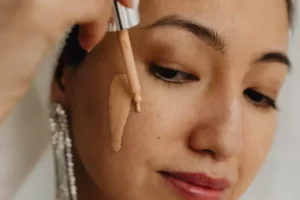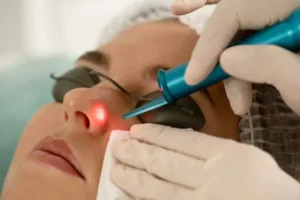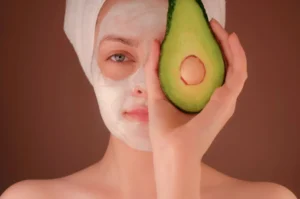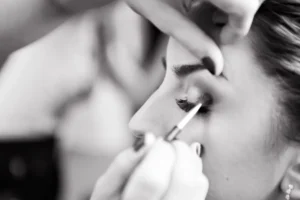Marketing beauty products in retail isn’t just about stocking shelves and hoping for the best. It’s about capturing attention, building trust, and providing shoppers with a compelling reason to make a purchase right now. With competition growing fast, the right strategy can turn a basic product into a bestseller. In this article, you will learn the seven expert tips on how to market Skincare items in retail effectively, without sounding salesy or over-the-top.
1. Know What Shoppers Want
Understanding what shoppers expect from a beauty product is step one when you want to market Skincare items effectively. Many individuals look for clean ingredients, quick results, or specific skin benefits. Instead of guessing, rely on data from customer reviews, feedback at the register, and online trends.
When a product highlights what shoppers already want, like anti-aging benefits or cruelty-free formulas, it stands out faster. It’s also important to consider packaging, price points, and current beauty trends, as these elements greatly influence buying decisions and help position your product more competitively in the market.
In addition, leveraging seasonal demand, limited-edition releases, and strong brand storytelling can further enhance visibility and create a deeper emotional connection with consumers.
2. Create Eye-Catching Displays

Keep in mind that a dull display won’t get a second glance. Instead of stacking products in rows, use lighting, mirrors, and bold signage to draw the eye. Feature seasonal collections or limited-edition packaging prominently. A well-designed display can turn an ordinary aisle into a must-stop spot.
Don’t forget testers, if allowed, because being able to try a product adds trust and boosts impulse buys. Incorporate brand colors and visual storytelling to enhance product appeal. Strategic placement near high-traffic areas can also significantly increase visibility and sales.
3. Train Staff to Know the Products Inside Out
A knowledgeable team that can explain the benefits of a face serum or the difference between matte and dewy finish makes all the difference when you’re looking to market Skincare items effectively. When staff recommend products with confidence, shoppers listen. Host regular product training sessions and encourage team members to try samples.
First-hand experience always adds a natural edge during conversations with shoppers, boosting customer trust, increasing conversion rates, and creating a more engaging in-store experience that strengthens brand loyalty and drives repeat purchases.
4. Leverage Influencer Displays or Endorsements
Instead of just chasing viral posts, bring that influence into the store. Use signage or shelf talkers featuring quotes or recommendations from trusted creators. If a product gained traction on social media, highlight that in-store with phrases like “as seen on TikTok.” Plus, a shopper who recognizes a product from Instagram is more likely to give it a second look, and maybe a spot in the cart.
Integrating digital trends with physical displays creates a seamless shopping experience that resonates with modern consumers and reinforces brand credibility through recognizable, influencer-backed social proof. These digital marketing strategies can bridge the gap between online buzz and in-store sales.
5. Offer Exclusive Retail Promotions

Launching exclusive bundles, buy-one-get-one deals, or “gift with purchase” promos can move products fast, just like the Korean beauty products that often lead with smart, limited-time offers. Retail-only discounts help drive foot traffic and reward loyal shoppers. Rotate offers monthly to keep interest fresh. Promotions tied to holidays or events, like Valentine’s Day or prom season, add a buzz.
6. Use Reviews and Real Results in Marketing
Don’t just say that the product works when you’re trying to market beauty items; you need to show it. Highlight before-and-after photos (with permission), share quick testimonials, or display a five-star rating on shelf tags. Incorporate user-generated content from social media, showcase dermatologist endorsements, and include QR codes linking to real-time reviews or demo videos to build trust and offer an interactive, informative experience for curious shoppers.
Featuring viral beauty products can also add credibility, as shoppers tend to trust products that have gained popularity online. Reading some genuine reviews provides the reassurance that many shoppers need before buying a new moisturizer or mascara. In addition, authentic feedback builds trust more quickly than flashy slogans ever could.
7. Keep the Experience Fresh
Rotate featured products weekly, switch up displays often, and stay current with seasonal trends. Introducing a new scent, color collection, or limited-time item creates urgency. Even a simple change, like featuring “staff picks of the month,” can freshen up the shelf and spark curiosity.
The key is making each visit to the beauty aisle feel like something new is waiting to be discovered, encouraging repeat visits, boosting engagement, and keeping your brand top of mind for shoppers in an increasingly competitive retail space.
Innovative Strategy, Real Results!
Marketing Skincare items is about being smart, consistent, and focused on what shoppers care about most. From the layout on the shelf to the conversation at checkout, every detail matters when you want to market beauty items in retail.
With these seven tips, it’s easier to turn browsers into buyers and make skincare products the highlight of the retail floor. Keep shelves fresh, train teams well, and promote what really works, and the sales will follow. Additionally, use data analytics to track buying patterns, optimize inventory levels, and tailor promotions, ensuring your marketing efforts stay relevant and drive continuous engagement with your target audience.







